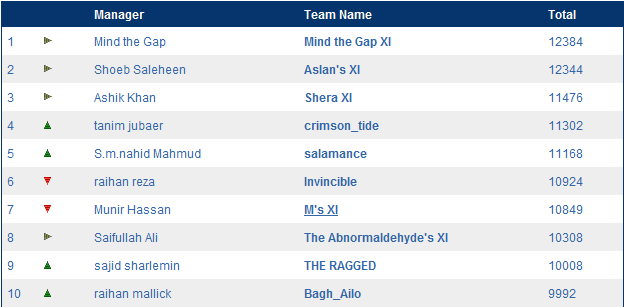|
F |
Fantasy Cricket |
ICC World Cup 2011 has just finished. During the world cup, lots of cricket fans were playing an online game named "Fantasy Cricket".
The score board of fantasy cricket looks like the following image. After each match of the world cup the score board of fantasy cricket updates.

Figure 1
Each player plays a role of a manager here. In the rank list there is a symbol besides each manger. There are three kinds of symbols. These are explained in the following table.
|
Symbol |
Explanation |
ASCII Representation |
|
|
The rank of the player has upgraded after last match, i.e. if the current rank of the player is K, the rank of the player before the last match was greater than K. |
U |
|
|
The rank of the player has downgraded after the last match, i.e. if the current rank of the player is K, the rank of the player before the last match was less than K. |
D |
|
|
The rank of the player has not changed after the last match, i.e. if the current rank of the player is K, the rank of the player before the last match was also K. |
E |
You will be given such a score board after a particular match. Can you determine any possible valid ordering of the players exactly before that round? For this problem you have to print the number of possible ordering before the last match.
Here is an example –